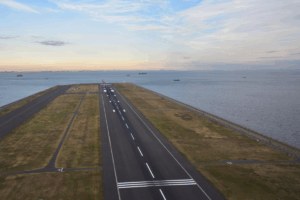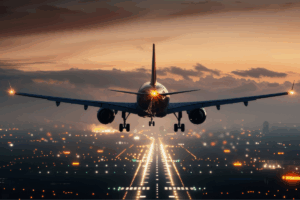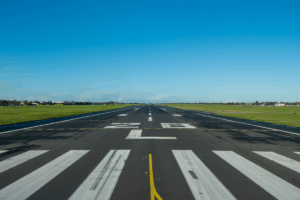Since the air travel industry began over 100 years ago, airport runway lighting systems have been critical to airfield infrastructure. Lights help guide pilots to safe and efficient takeoffs and landings and smooth taxiing across the tarmac, especially at night or in low-visibility conditions.
Airport runway lighting systems comprise many different types of lighting, all of which have specific meanings and play specialized roles in enhancing airfield safety. Many airports, especially those with non-precision runways, usually use a simple runway lighting system that consists of runway edge lights, PAPI lights, runway threshold end lights, and taxiway lights. However, most modern airports that see dozens or hundreds of flights per day will have a more complex runway lighting infrastructure to support the safe movement of large numbers of aircraft.
Here’s a list of the more common runway lights in service at airports worldwide, and how they contribute to operational efficiency.
Runway Approach Lights
At many airports, the first lights that pilots will reach before landing are the approach lights, which show which direction the runway is in. They are usually white, but many large airports with complex lighting infrastructure use yellow or red approach lights.
These unidirectional lighting systems are often installed in a cross form, located before the runway for easy navigation.
Runway End Identification Lights
Airports that do not use approach lights will often use runway end identification lights (REILS) instead, making these the pilot’s first directional reference for runways. These two synchronized, flashing lights are installed on each side of a runway threshold, providing a visual marker for the approach end of the runway.
Usually white in color, REILS help pilots quickly and positively identify the landing area, especially in low-visibility conditions such as at night or during inclement weather.
Threshold Lights
The primary purpose of threshold lights during approach is to help the pilot avoid landing their aircraft short. These green-colored lights are installed at the beginning of the section of the runway where the aircraft can touch down, but they never indicate the actual touchdown point.
Threshold lighting may be the first lighting seen by a pilot on approach and a windcone or automated weather observation system (AWOS) would be used to determine approach direction.
While pilots see the unidirectional green light from the air, threshold lights almost always have a red light on the other side that denote the end of the runway to planes not airborne.
Runway Edge Light
Runway edge lights are placed along the left and right edges of the runway, either elevated from the ground or embedded in the surface. They indicate the part of the runway safe for landings.
These lights are, in most cases, white in color, but can be yellow near the end of the runway on instrument runways, and red for the end of the runway in the direction of approach on displaced thresholds. Generally, you’ll find that the more complex airport systems use more colors in their runway edge lights.
Taxiway Lights
Taxiway lights guide airplanes moving on the ground. They are typically installed on the taxiway and apron, ensuring safe ground movement by indicating holding portions and intersections to prevent incursions.
These lights use various colors to mark different areas, such as:
- Blue lights that outline the edges of the taxiway
- Green lights that run along the taxiway centerline
- Solid amber lights, often inset, to mark holding positions or intersections
- Flashing amber lights to warn pilots they are approaching a runway
- Red lights, often both inset and elevated, are used to prevent an aircraft from entering a runway without clearance
- Alternating green and yellow lights that guide aircraft off the runway
Precision Approach Path Indicators (PAPI)
PAPIs are bicolor lights that assist the pilot in keeping the correct approach path. They are typically installed to the left of the runway unless it is impractical due to terrain, cross runways, or taxiways.
Each PAPI consists of four lighting fixtures that can emit a combination of red or white light output. Different combinations provide critical information on an aircraft’s descent. For example, four red lights indicate that the plane is too low to the ground. Four white lights tell the pilot that the aircraft is too high. Two white and two red lights usually indicate a correct approach.
Obstruction Lights
These omnidirectional lights, typically red, illuminate airport buildings, obstructions, closed or temporarily unavailable areas on the airfield so the pilot can make navigational adjustments accordingly.
If you have any questions about how different airport lights work together to create a safer runway system, contact the experts at Airport Lighting Company. We’re always happy to provide professional advice and connect you with high-tech solutions that will improve your operational efficiency.
Read More: The Most Impactful Technology Advances In Airport Lighting
Call Airport Lighting Company For The Latest In Airport Lighting Technology
The Airport Lighting Company team is standing by to answer your questions about how our tech-based products can help improve the safety, reliability, and efficiency of your runways. Call 315-682-6460 for fast, friendly service you can count on.


